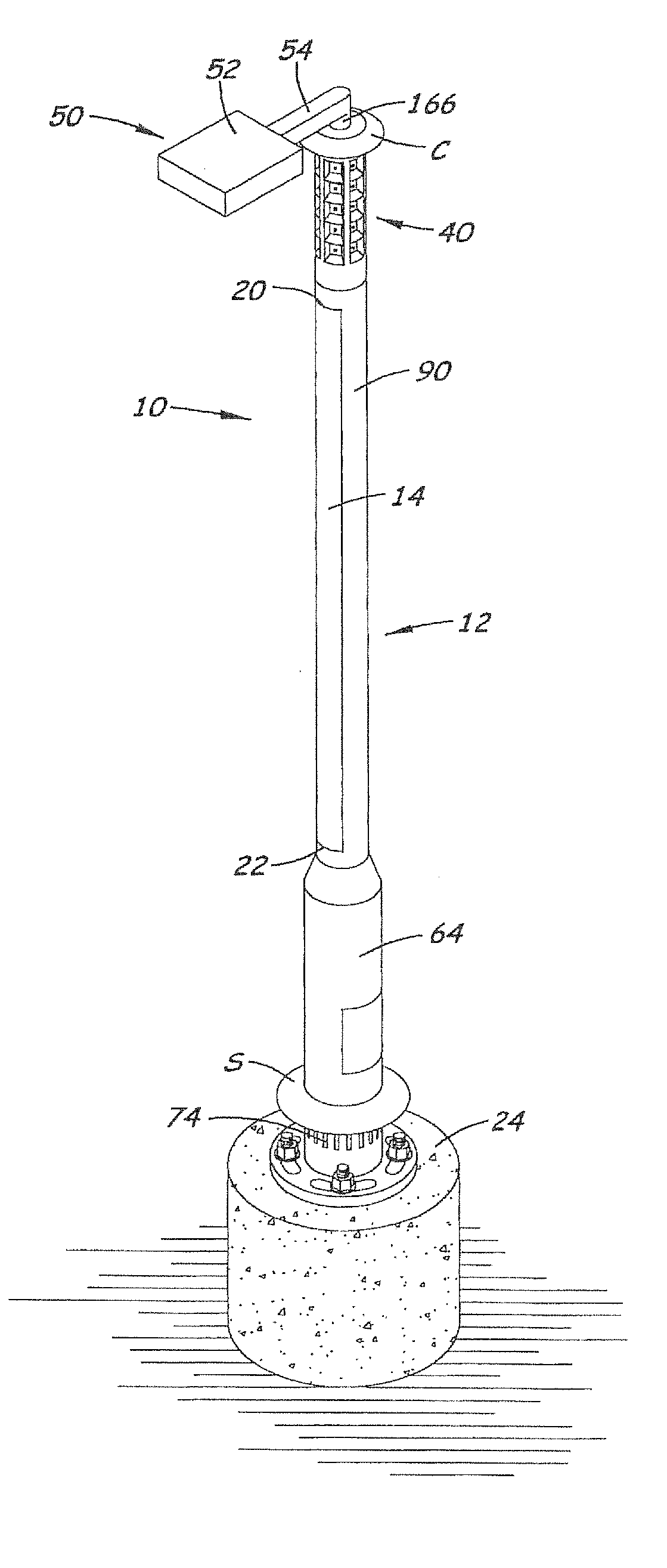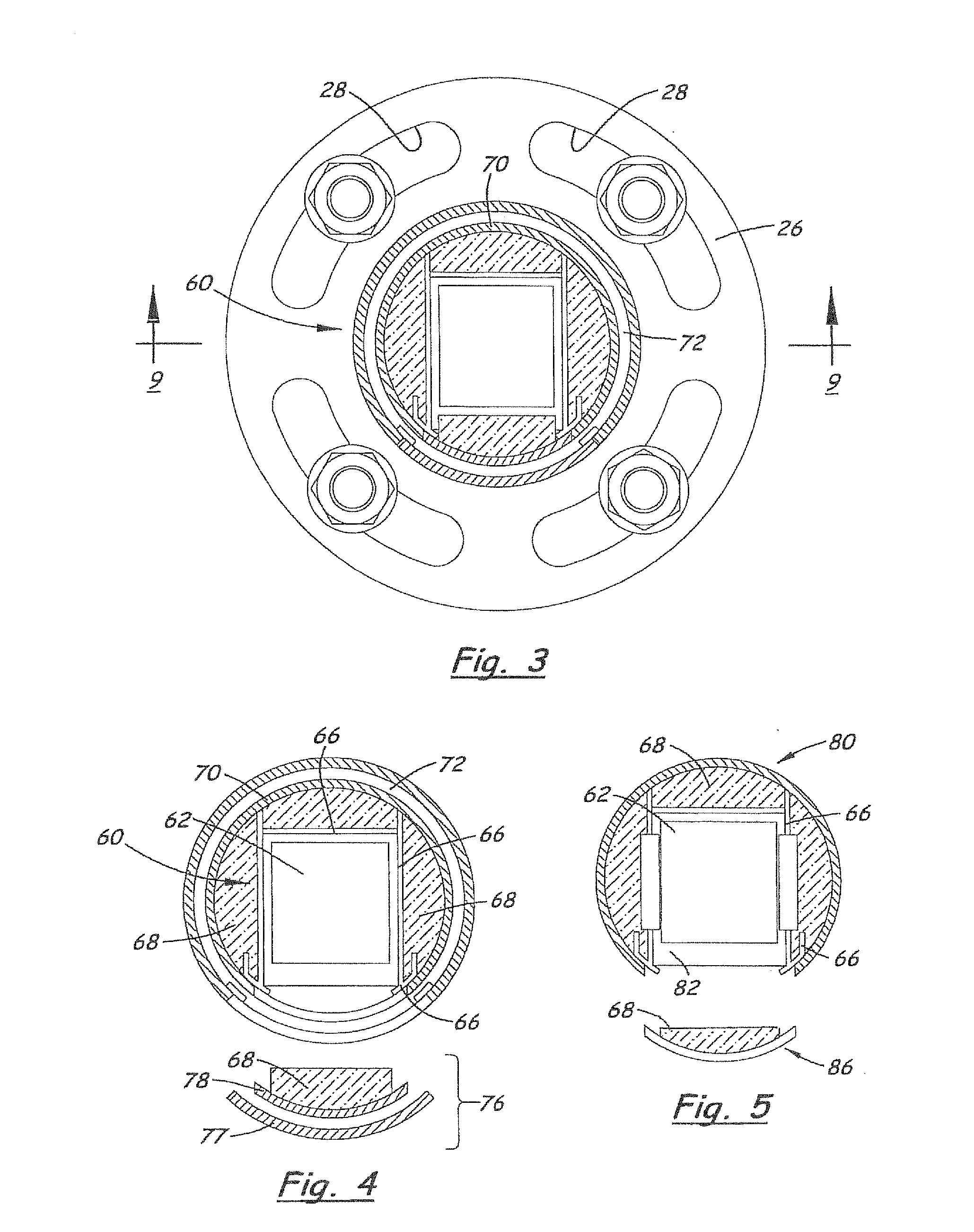Energy-efficient solar-powered outdoor lighting
a solar energy and outdoor lighting technology, applied in the direction of dc source parallel operation, lighting support devices, built-in power, etc., can solve the problems of load “turning itself off and battery damage, and achieve the effect of effective operation and service for users
- Summary
- Abstract
- Description
- Claims
- Application Information
AI Technical Summary
Benefits of technology
Problems solved by technology
Method used
Image
Examples
example
Apparatus and Methods of Active Control for Energy-Efficient Lighting
[0388]The preferred apparatus comprises an LED-based luminaire, a photocell, a control board, a charge controller, a solar collector (or solar collector panel) a battery subsystem (composed of 6-8 batteries, a battery enclosure and wiring harnesses), three motion sensors, and the pole assembly. See FIG. 37.
[0389]The solar collector captures light during daytime hours and passes it onto the charge controller. The charge controller manages the power provided from the solar collector to optimize the power to be stored in the batteries. The batteries hold stored electrical energy and release it to power the LED luminaire and other system electronics. Various modes of energy release are determined and managed by the control board. The control board uses input from the photocell to determine when to turn the luminaire on (and off at dawn), and uses energy-saving algorithms to manage energy to the luminaire. These algorit...
example normal
Mode Operation:
[0418]As portrayed in FIG. 46, toward the end of the day, as it starts to get dark, the photocell turns on the light at 100% (factory preset) normal power. It stays at 100% for two hours (factory preset) then dims down to 25% brightness (factory preset) for the balance of the night w / motion sensor over-ride. If motion is detected it immediately brightens up to 100% for 10 minutes after the last-detected motion. It then dims back down to the lower setting over one minute. Towards dawn, the light will brighten back up to full brightness approximately 30 minutes (factory preset) prior to dawn. When the photocell threshold for dawn is crossed, the light will turn off.
Example Energy-Savings Mode Operation:
[0419]FIG. 47 portrays examples of how system conditions can be utilized to determine the appropriate energy modes based on current states to modify power delivered, to the light or other loads, beyond or instead of the “normal” changes over time shown in FIG. 46. For ex...
example 1
, Under Version C Programming:
[0463]Starting battery voltage (morning of November 1); Vsb=12.2V; Ending battery voltage (evening of November 1); Veb=13.1V; Factory pre-sets for Tk=120 & Tn=30 (dusk 2 hrs & pre-dawn 0.5 hr.); Dp=0.25; Mode=N1; and Light is turned on & off by the photocell.
[0464]Photocell turns the light on at 100% at dusk & remains on for 2 hours, at which time the light dims down to 25% power over the next minute. The light remains at the dimmed down light level state until the motion sensor is activated, at which time the light is brought back up to 100% for 10 minutes. The light then dims back down to 25% power over the next minute. The light dims back up to 100% 30 minutes pre-dawn and remains on until the photocell shuts the light off.
PUM
| Property | Measurement | Unit |
|---|---|---|
| diameter | aaaaa | aaaaa |
| voltages | aaaaa | aaaaa |
| voltages | aaaaa | aaaaa |
Abstract
Description
Claims
Application Information
 Login to View More
Login to View More - R&D
- Intellectual Property
- Life Sciences
- Materials
- Tech Scout
- Unparalleled Data Quality
- Higher Quality Content
- 60% Fewer Hallucinations
Browse by: Latest US Patents, China's latest patents, Technical Efficacy Thesaurus, Application Domain, Technology Topic, Popular Technical Reports.
© 2025 PatSnap. All rights reserved.Legal|Privacy policy|Modern Slavery Act Transparency Statement|Sitemap|About US| Contact US: help@patsnap.com



